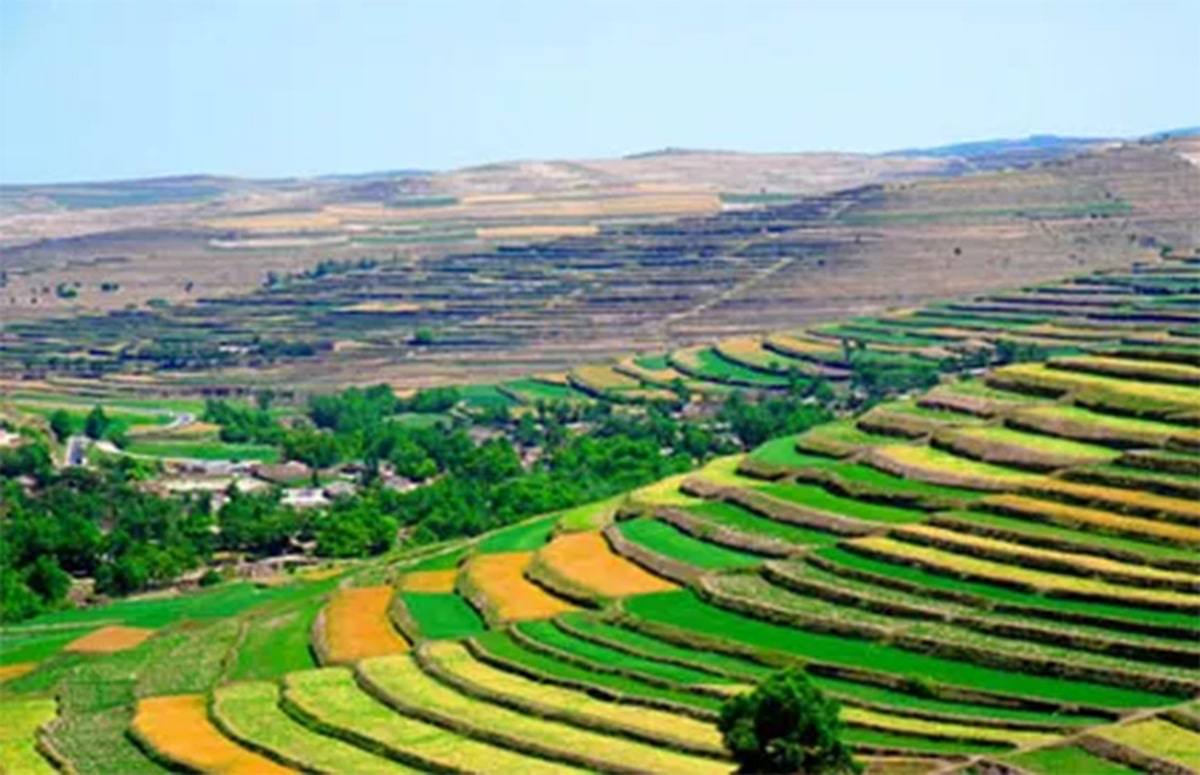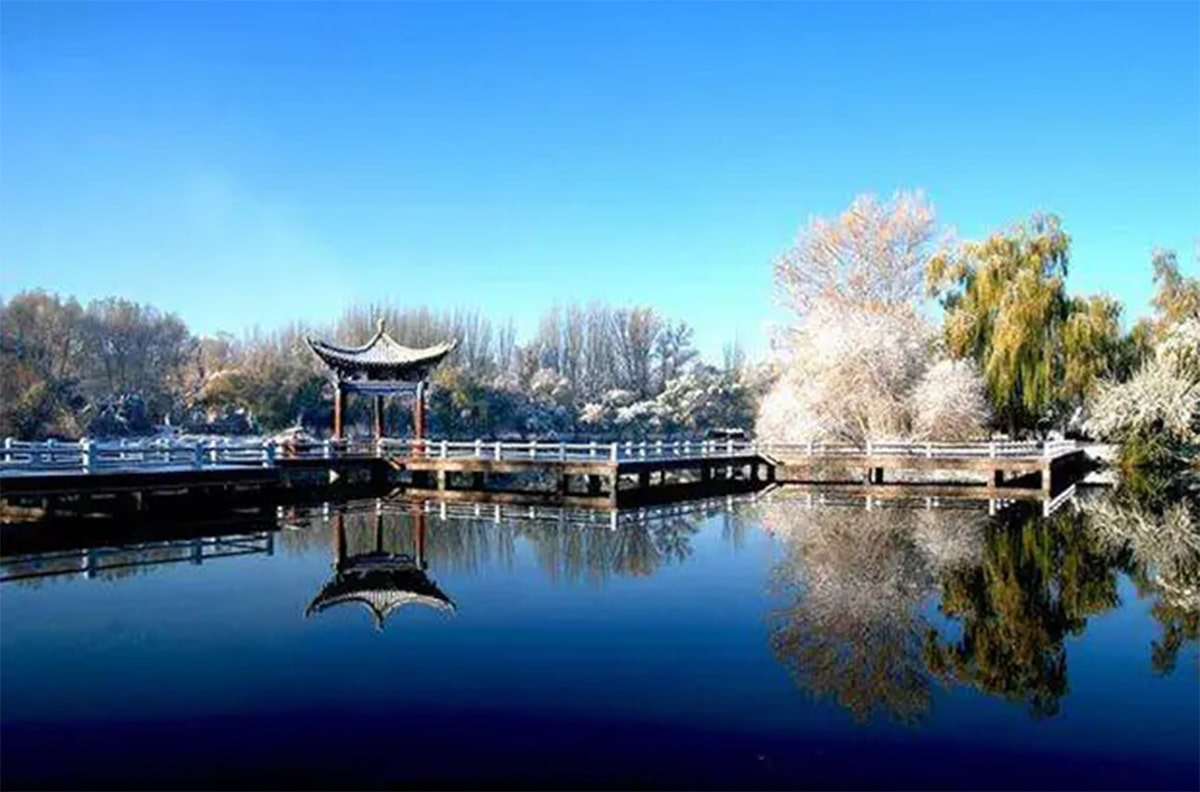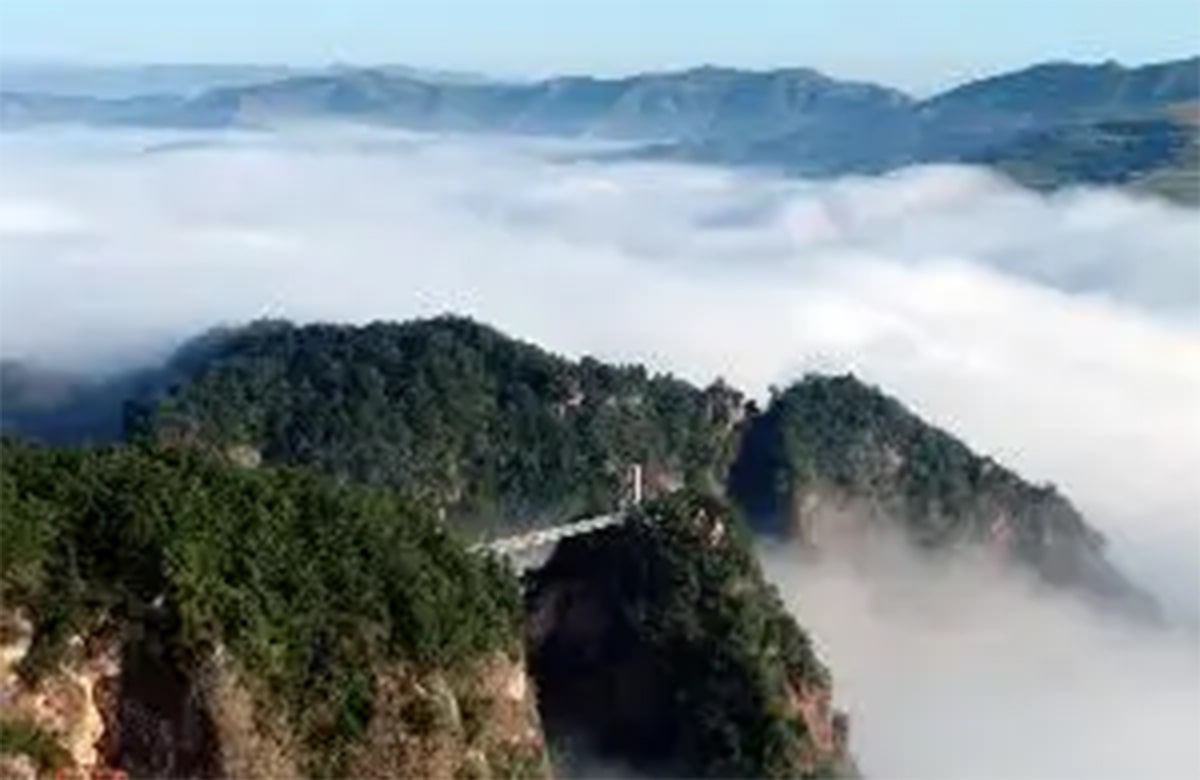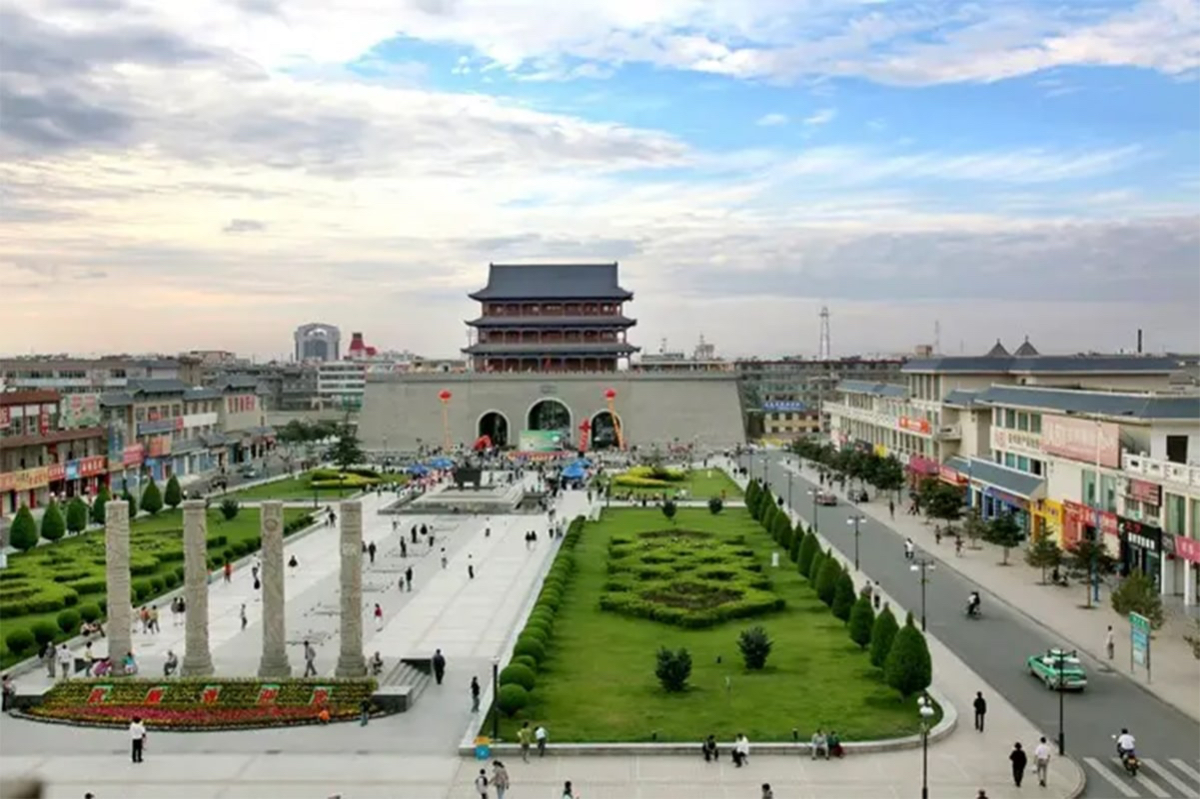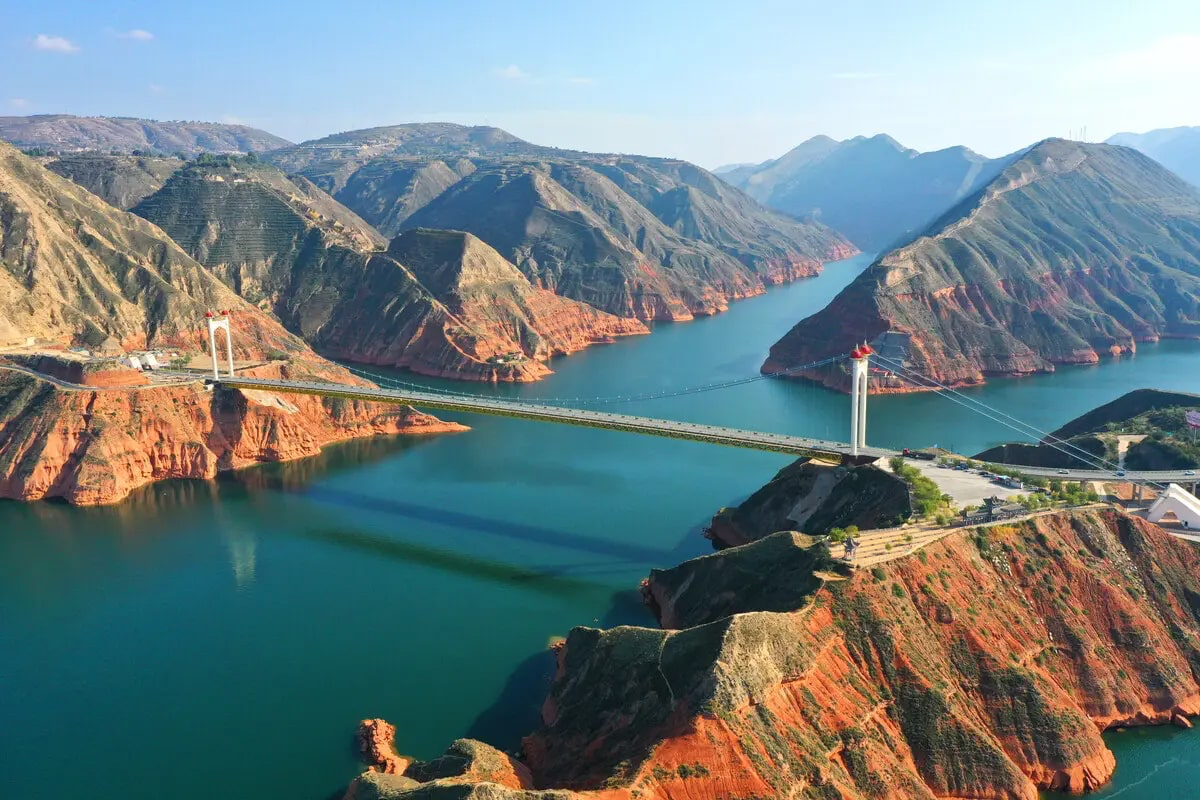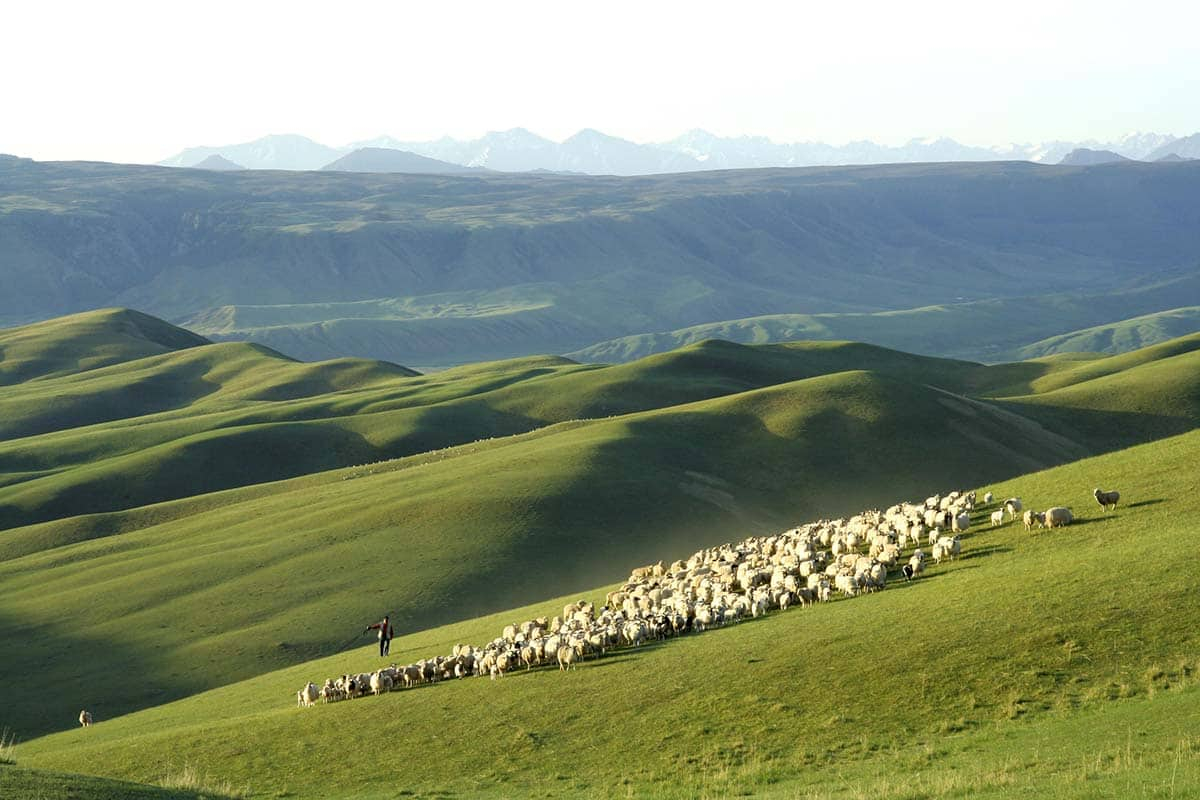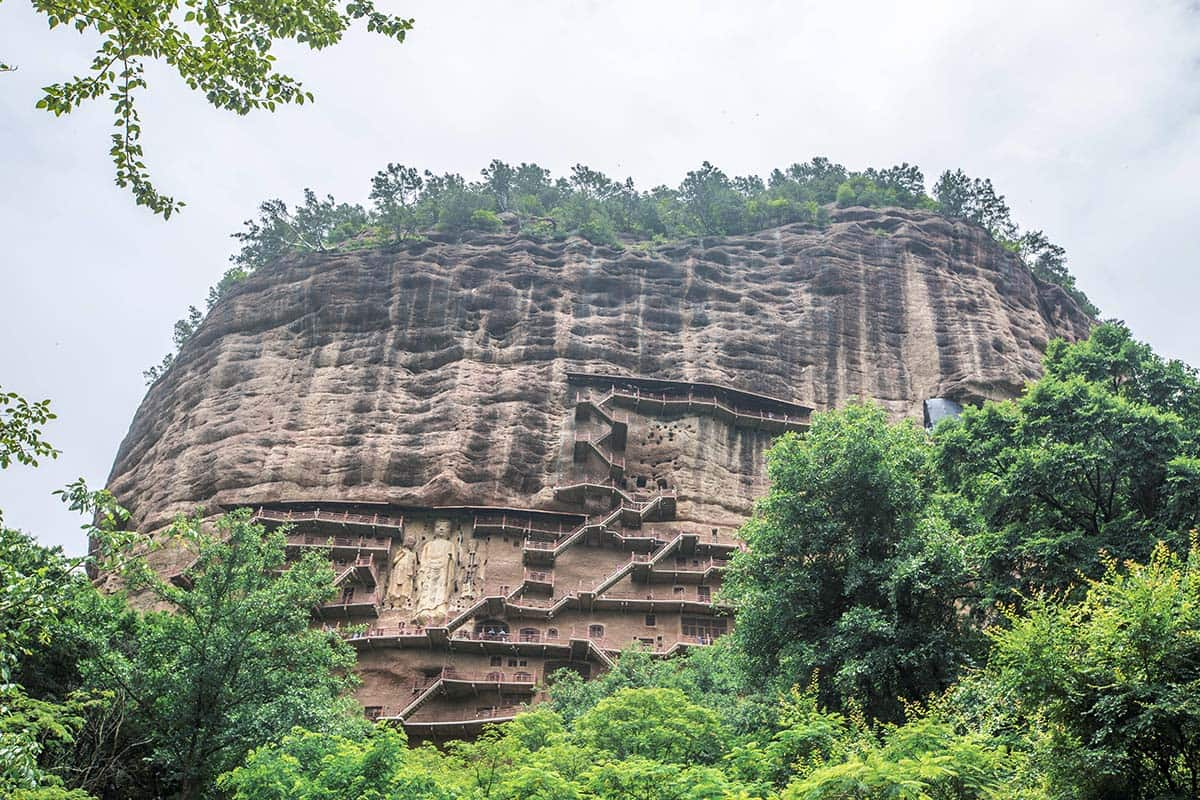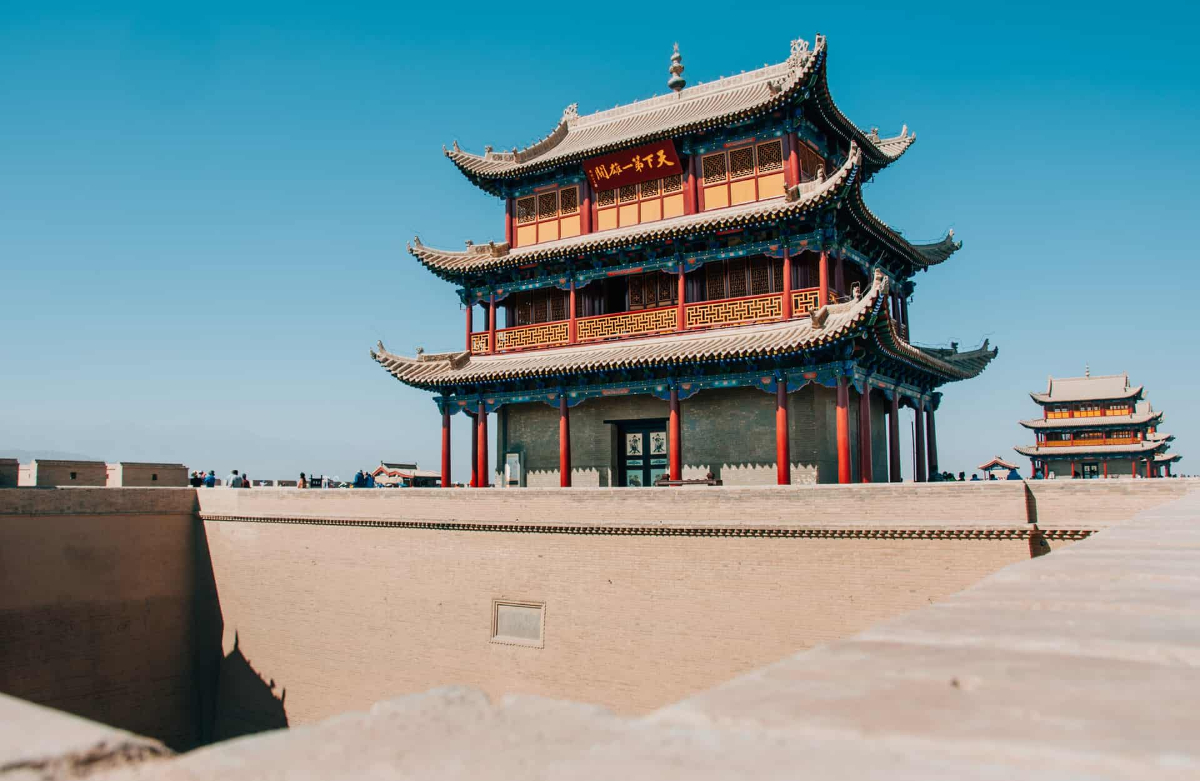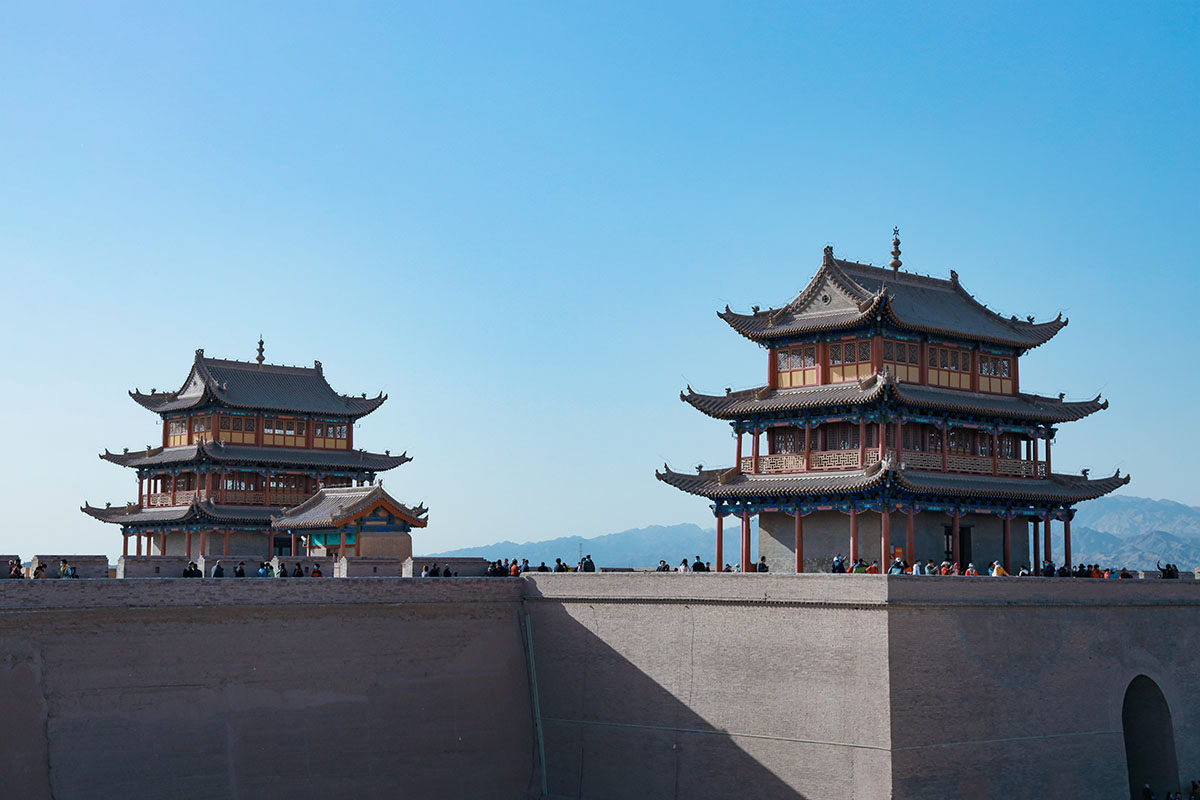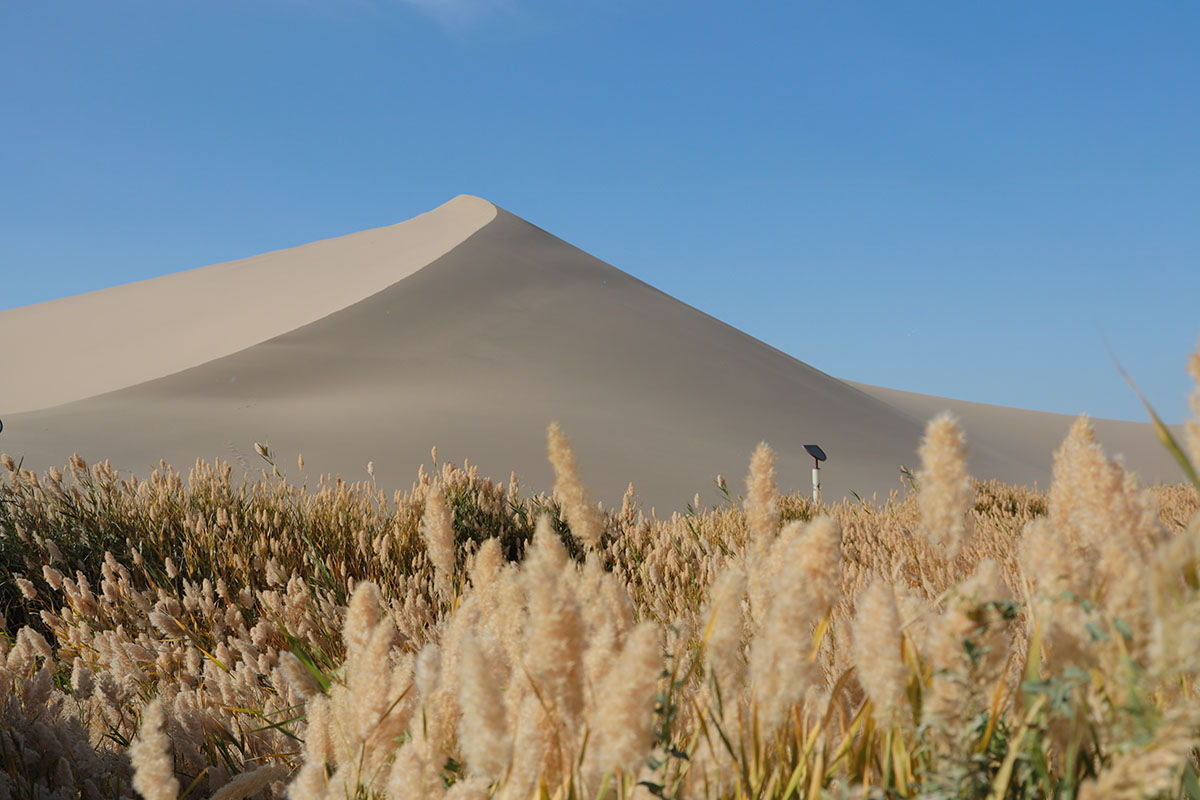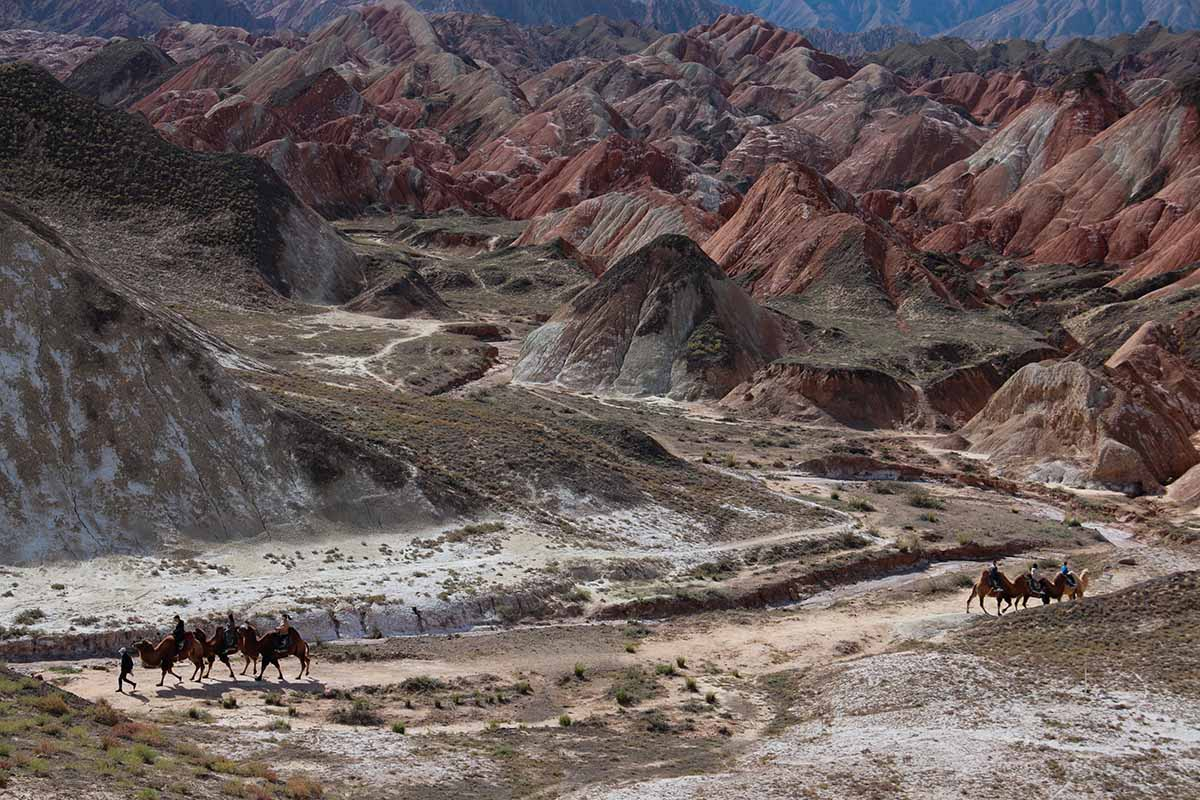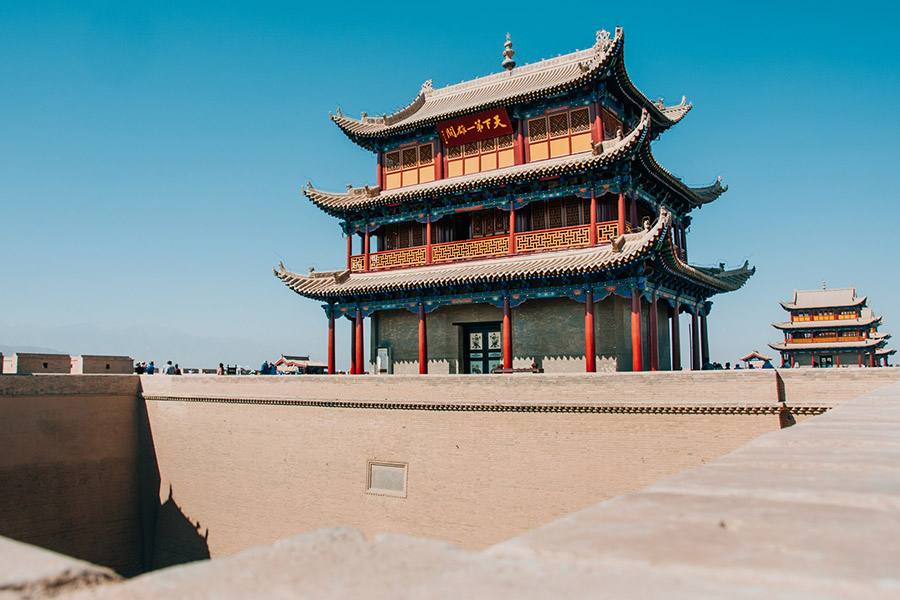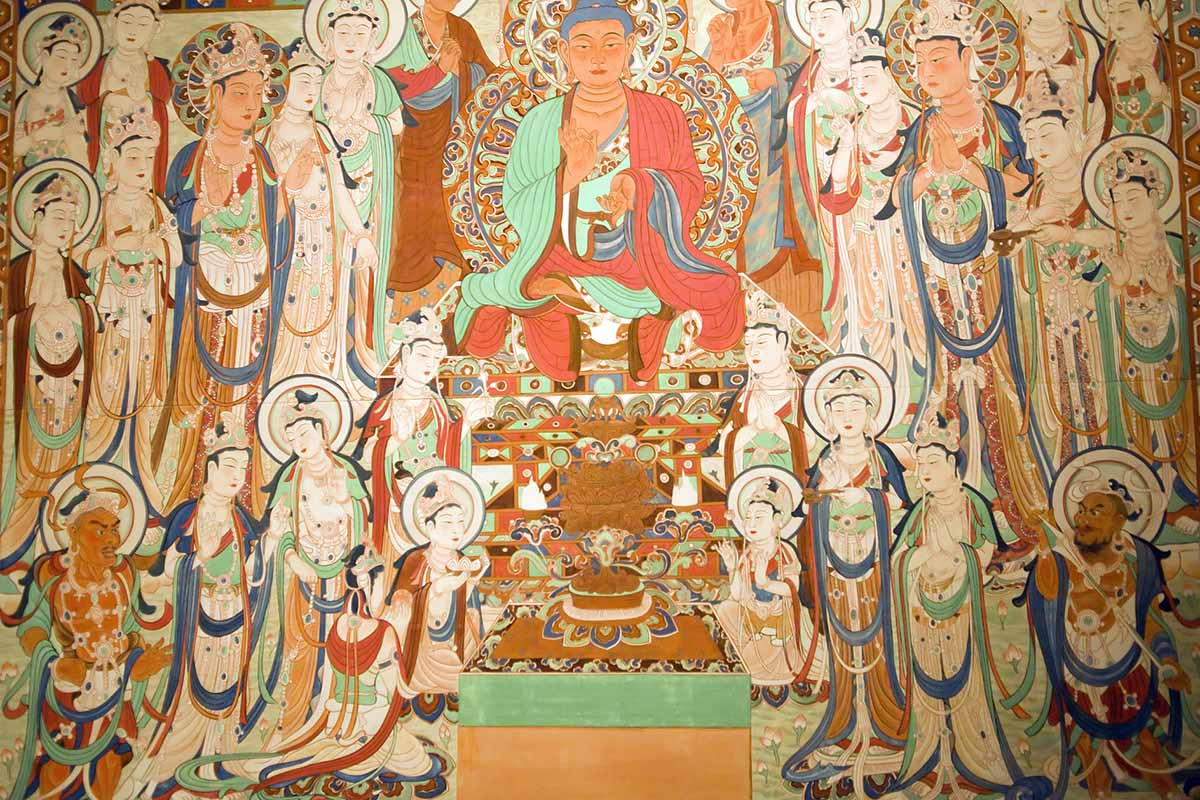Hexi Corridor, the soul of Silk Road
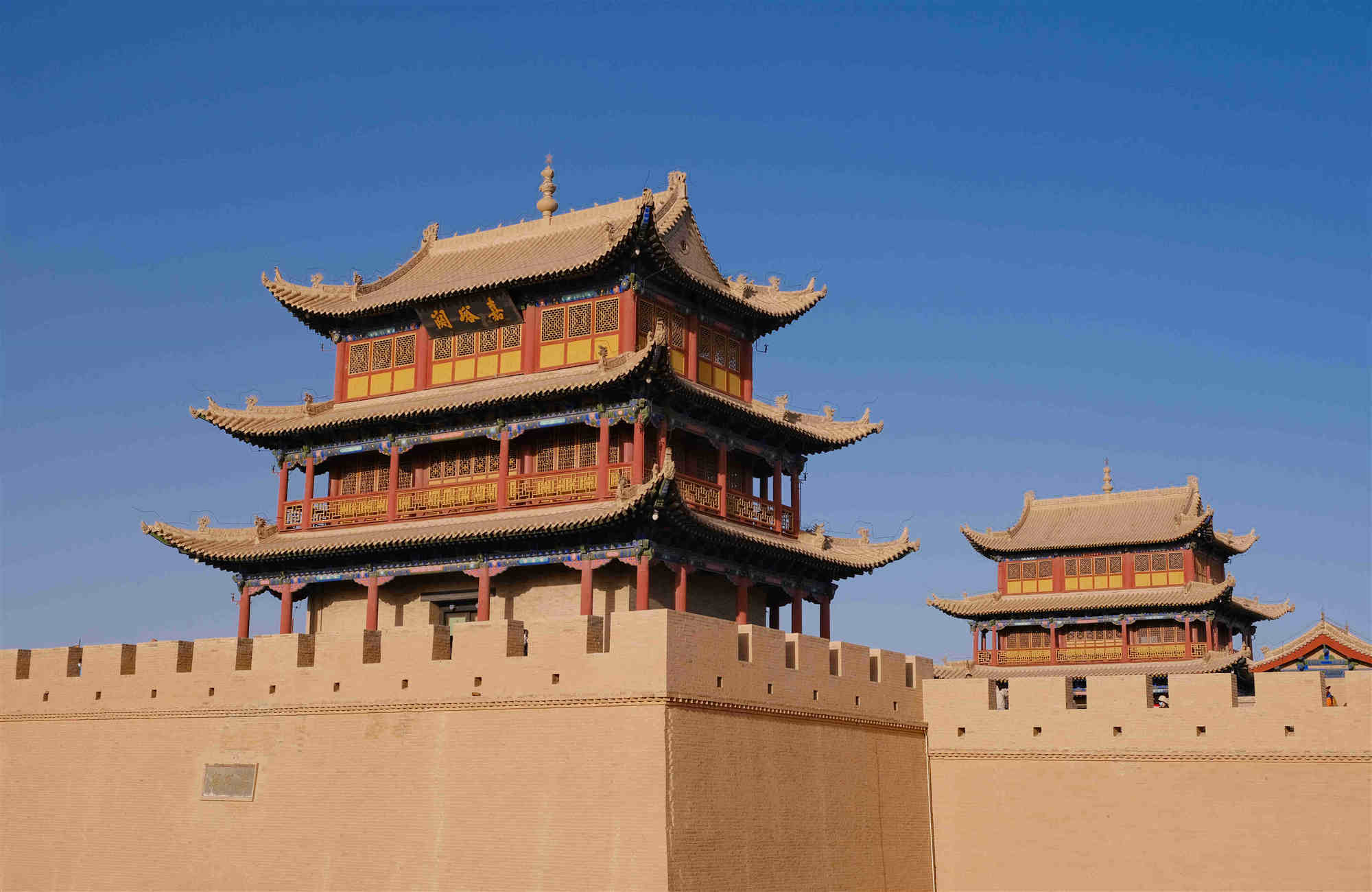
As part of the Northern Silk Road running northwest from the western section of the ordos Loop between Yinchuan and Lanzhou, the Hexi Corridor was the most important trade route in Northwest China, linking China proper to the historic Western Regions for traders and military incursions into Central Asia. It is a string of oases along the northern edges of the Qilian Mountains and Altyn-Tagh, with the high and desolate Tibetan Plateau further to the south.
To the north are the Longshou, Heli and Mazong Mountains separating it from the arid Badain Jaran Desert, Gobi Desert and the cold steppes of the Mongolian Plateau. At the western end, the route splits into three, going either north of the Tianshan Mountains or south on either side of the Tarim Basin. At the eastern end, the mountains around Lanzhou grants access to the Longxi Basin, which leads east through Mount Long along the Wei River valley into the populous Guanzhong Plain, and then into the Central Plain.
The ancient silk road started from xi 'an and crossed the Hexi corridor and then entered Xinjiang from Yang Pass and Yumen Pass respectively. The Hexi corridor became the hub of the ancient silk road, connecting the material trade and cultural exchange of the three continents of Asia, Africa and Europe. The eastern and western cultures had a mutual reaction here and accumulated a magnificent historical civilization.
The Hexi Corridor, which lasts for 1200 kilometers from steep Wushaolin hillside to Xingxingxia Gorge, at the border of Gansu and Xinjiang, is really a narrow but long stretched passage.Since ancient times, the Hexi corridor has been an artery between China and the Western Regions as well as the North Silk Road. Jiayuguan, Dunhuang Mogao Grottoes and Yangguan Pass are all located in the west of the corridor. Dunhuang, Jiuquan, Zhangye and Wuwei were the primary economic, political and cultural exchange centers along the corridor.
During the Han Dynasty, Zhang Qian who was delivered to the Western Regions twice must pass the Hexi Corridor in his whole journey. And it was the right place that Huo Qubing, a general of the Han Dynasty, driven out the huns, making the Silk Road channel unobstructed.

Nowadays, the Hexi Corridor is actually a must for Silk Road Tours. Travelers are willing to have the overall view of the gorgeous landscapes as well as enjoy the ancient civilization with long history; experience the greatness of the Great Wall as well as posts on the Silk Road.
● Main attractions along the Hexi Corridor:
Zhangye Danxia Landform
Zhangye Danxia is known for the unusual colours of the rocks, which are smooth, sharp and several hundred meters tall. They are the result of deposits of sandstone and other minerals that occurred over 24 million years. Known for its colorful rock formations, it has been voted by Chinese media outlets as one of the most beautiful landforms in China.
Mogao Grottoes (Dunhuang)
one of three noted grottoes in China for its fabulous frescos and statues; the largest, oldest and the best-preserved Buddhist grottoes with the richest contents in the world today.
Echoing-Sand Mountain
The Echoing-Sand (Mingsha) Mountain is a spectacular area of natural scenery in Dunhuang. The mountains are pale golden sand dunes dozens of meters high, covering an area roughly 40 km (25 mi) square, when the wind blows, give out a singing or drumming sound. They are part of the Kumtag Desert.
Yulin Grottoes (Dunhuang)
a brunch of the Dunhuang art complex and another name Ten-Thousand-Buddha Valley; beautiful frontier scenery, caves, murals consist of huge scripture drawings, portraits of Buddha, etc…can be seen here.
West Thousand-Buddha Cave (Dunhuang)
is considered as Dunhuang Buddhist art; the frescos in this cave are similar in structure and artistic style to those found in Mogao Caves.
Jiayuguan Pass (Dunhuang)
the first pass at the west of the Great Wall of China; the most magnificent and best-preserved pass among the total over one thousand passes along the Great Wall of China.
Yumenguan Pass (Dunhuang)
a strategic pass on the ancient Silk Road; takes a square form and the well-preserved body of wall was built with stable loess with each gate in the west.
Yangguan Pass (Dunhuang)
the important pass on the Southern Way of Silk Road, and the significant gateway connecting Central China and Western Regions.
- HOTEST
- RECOMMEND
